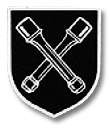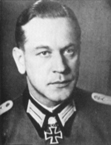Erik Rutins
Posts: 37503
Joined: 3/28/2000
From: Vermont, USA
Status: offline

|
The following is an introduction to Kharkov: Disaster on the Donets, written by the design and development team at SSG. It covers some of the key features and improvements to this new successor to the Decisive Battles and Battlefront systems.
-----
What is Kharkov?
Kharkov is a blend of our Decisive Battles and Battlefront systems, together with some important new features. The Kharkov system can be used to make battles at either regimental or battalion scale and is therefore a successor to both Battlefront and the Decisive Battles systems.
What does the game cover?
The game covers the doomed Russian counter offensive at Kharkov between May 12th and May 28th, 1942. The Red Army’s offensive was intended by Stalin to crush the fascist invaders, and start the process of their eviction from all Russian territory. The battle started well for the Red Army and some substantial territorial gains were made. However, the inconvenient and unknown presence of two fresh Panzer divisions in Kharkov itself, combined with Stalin’s willful refusal to admit reality, led ultimately to a recreation of the dismal encirclements of the previous year, and opened the door for Army Group South’s drive on Voronezh and ultimately on Stalingrad.
The battle is definitely fun for both sides. The Russian start the game with enormous combat power and can make life very difficulty for the Axis defenders, especially with Russian cavalry regiments free to roam through lightly defended areas behind the front and powerful Tank Brigades poised to exploit breakthroughs. Unfortunately for the Russians, the Germans were planning an offensive of their own on the Russian southern flank, and this kicks off on the fifth day of the battle. Provided the Axis defenders have managed to prevent disaster during the initial Russian push, they then get to mount a powerful attack of their own, and it is the Russian’s turn to scramble in defence.
What are the main design innovations?
A fundamental problem in wargame design is the iron grip of hindsight. The player knows, or can easily find out, what happened in the course of the historical battle that we are trying to recreate. Hindsight allows him to perform many actions that his historical counterpart could never do. Quiet sectors of the front can be completely stripped of men, leaving large sectors guarded only by historical knowledge. Orders from Hitler or Stalin, historically disregarded at extreme peril, can be safely ignored.
There are two solutions to the problem. One involves erasing your memories of the battle and frankly we don’t have the technology and in any case we’re not confident of speedy regulatory approval even if we did.
Our second solution lies with the twin innovations of Areas of Operations and Mystery Variants. With Areas of Operations (AOs) all units in each formation in the game are prevented from moving outside the AO designated by the scenario designer. While our previous games tied a formation’s Attack Supply to its HQ, and imposed penalties for HQ movement, a determined player could still uproot a formation from its proper place in the front line and send it halfway across the map to fight elsewhere. With the AO system, this simply can’t happen.
How Does the AO System Work?
To illustrate, let’s consider the Russian 21st and 23rd Tank Corps, which are part of the Russian 6th Army and which start the game in reserve behind the front lines south of Kharkov. Their task was to exploit holes in the Axis defences created by the 6th Army’s infantry formations and form the southern pincer of the drive on Kharkov. With no AO restrictions, you can undertake a number of ahistorical and unmilitary operations with them.
Firstly, you could throw them immediately into the breakthrough battle, even though the Russian orders were to wait for the infantry to create the breakthrough. Secondly, and even more drastically, you could dash off a short (and surely suicidal) note to Stalin informing him that his cherished summer offensive was cancelled because you ‘knew’ that the Axis would be up to something bad on the southern front five days from now and you were moving all his precious Tank Brigades south to meet the looming threat (that only you knew about).
The AO restrictions prevent both of these undesirable eventualities, but naturally these AO restrictions work both ways. Just as the Russian player can’t strip his front lines to pile units in the way of the Axis, the Axis are prevented from doing the same to block the Russian thrusts on Kharkov. Instead, both players must solve the problems they face with the forces that they have to hand as best they can, just like their historical counterparts, while still retaining militarily sensible defences in other sectors of the front.
Naturally, the AOs change with circumstances and time. In our example, the Tank Brigades will have a much expanded AO the turn after the infantry formations capture two designated objectives, or on Turn 5 regardless of the infantry’s progress. So if your infantry does well you are rewarded by the early release of the Tank Brigades but if they are blocked then the tanks will eventually show up to try and force the issue.
In general, AO restrictions are eased over time. Also, reserve formations, especially those off map at the start of the battle, or alert formations released if the enemy captures important objectives, will have wide AOs so that they can perform their historical role as fire brigades, plugging gaps or countering breakthroughs.
What Do the Mystery Variants Do?
Gamers, being gamers, will naturally try to exploit the system. What is to stop them from learning the other side’s AOs and exploiting that knowledge? This is where the Mystery Variants come in. Each side has ten Mystery Variants. In each variant, each formation could have a different AO, or different timing on an existing AO. In general, these variations will enlarge AOs over those found in the Historical Scenario, so you will never be sure of where enemy forces have been ordered to go and you will be unable to base your actions on the AOs found in the Historical Scenario.
Some variants are combinations of changes found in other variants so even if you work out that one enemy formation has new orders, you won’t be sure that other formations haven’t been given similar freedom.
The result of the Mystery Variants is to more or less eliminate the benefit of hindsight (without messy surgery or experimental drugs). You will have to react to events as they unfold and make sensible decisions for all your forces. For instance, the northern sector of the battlefield is normally quiet for both sides. However, one or more variants will allow a subsidiary Russian drive on Belgorod. If all the German defenders have migrated as far south as possible to help out at Kharkov then the results could be very embarrassing for the Axis player.
(continued...)
_____________________________
|
 Printable Version
Printable Version
























 New Messages
New Messages No New Messages
No New Messages Hot Topic w/ New Messages
Hot Topic w/ New Messages Hot Topic w/o New Messages
Hot Topic w/o New Messages Locked w/ New Messages
Locked w/ New Messages Locked w/o New Messages
Locked w/o New Messages Post New Thread
Post New Thread